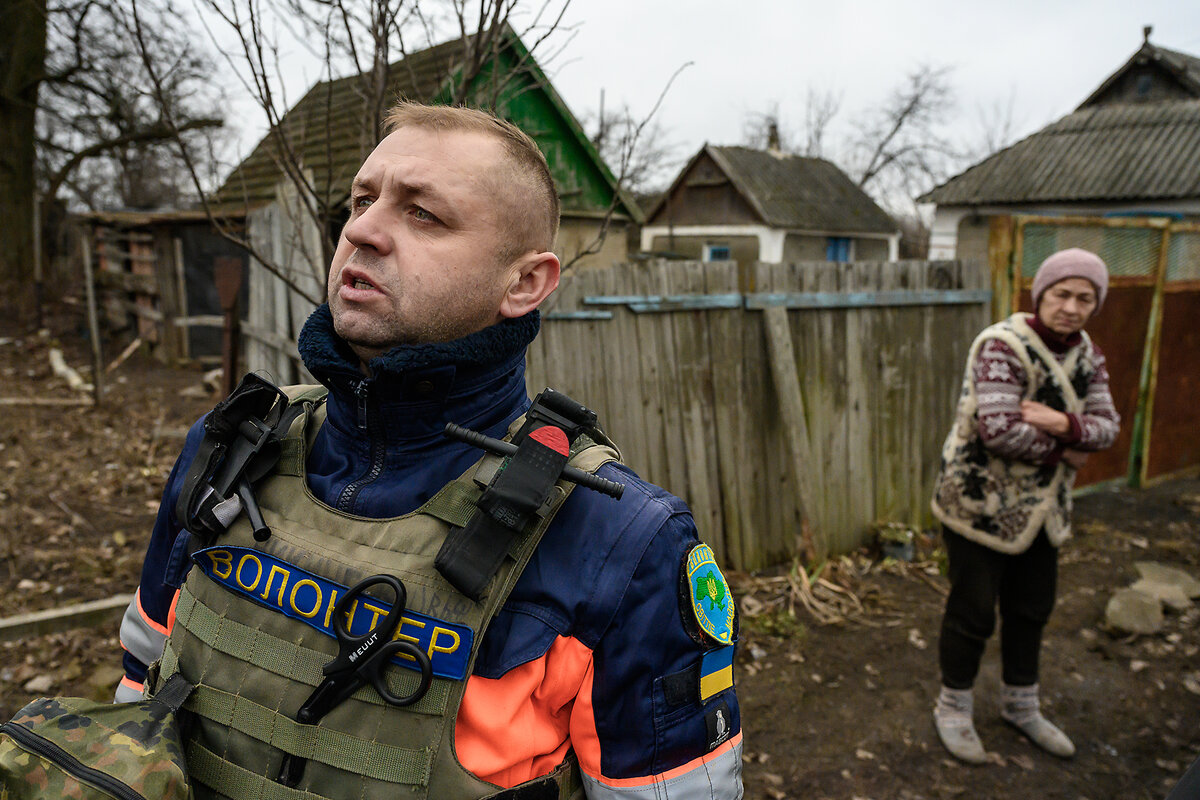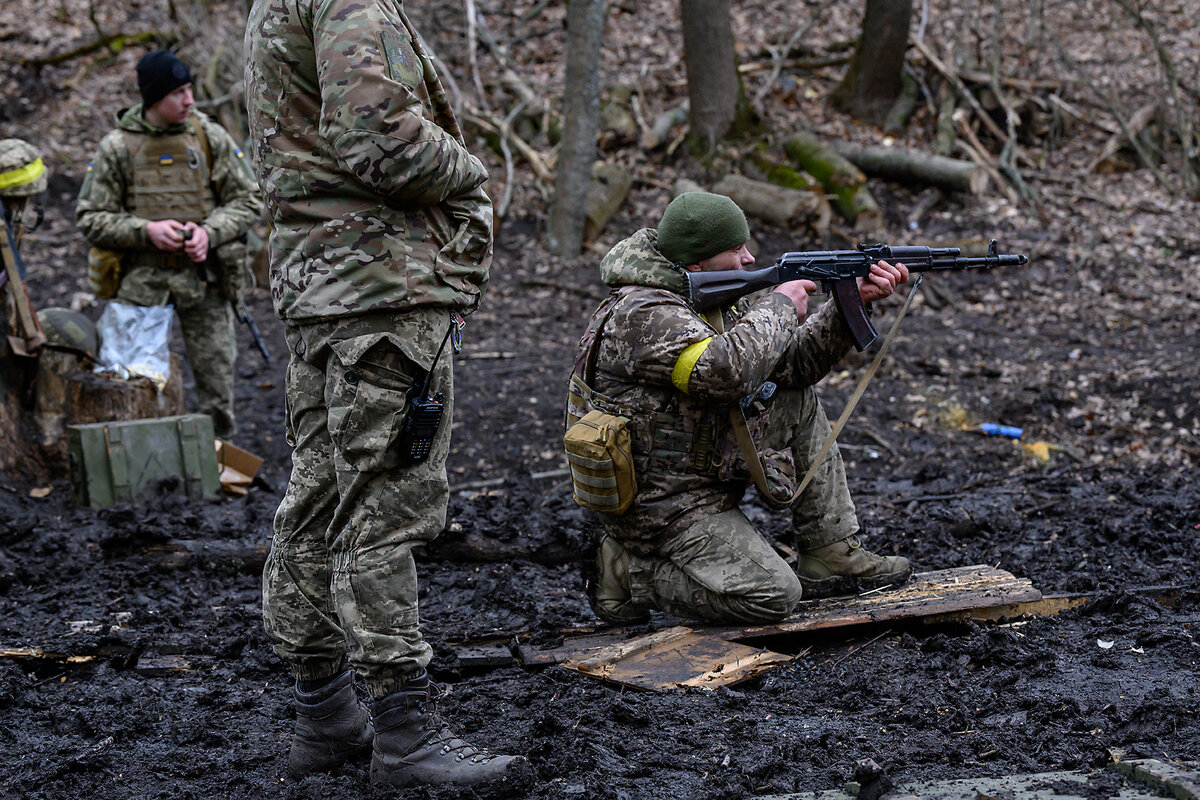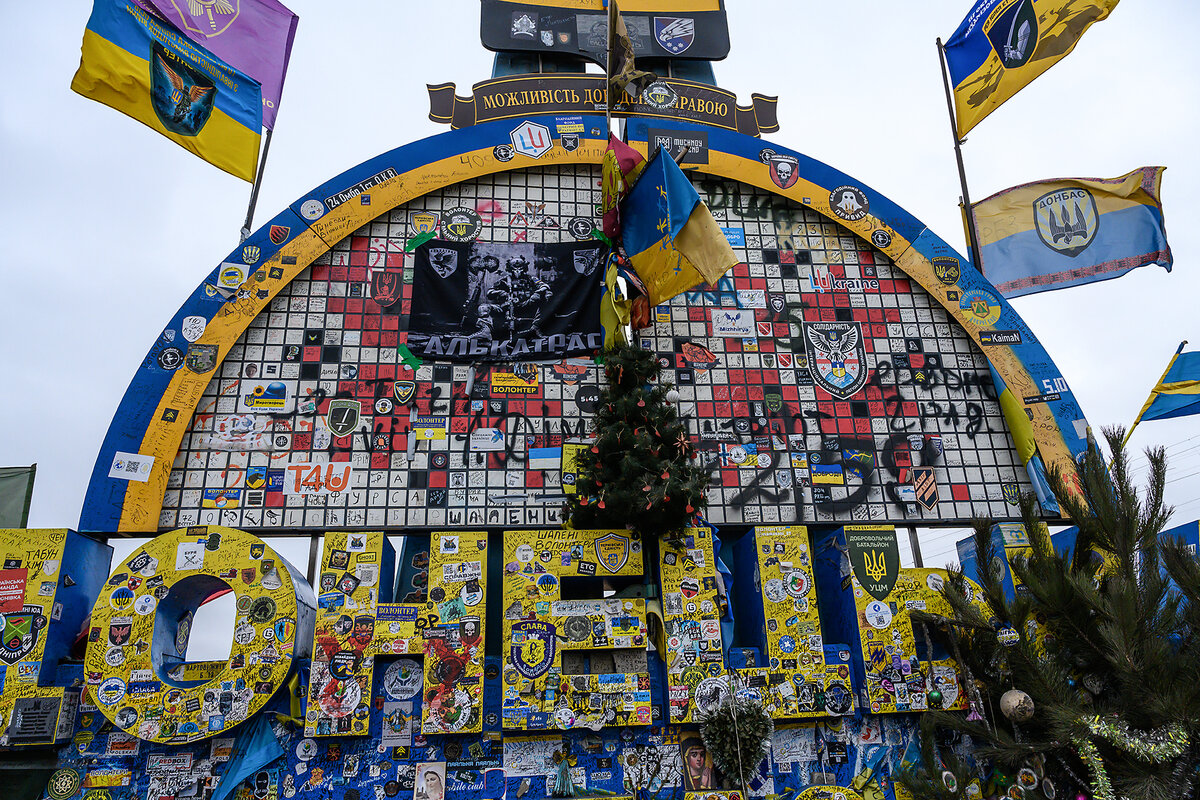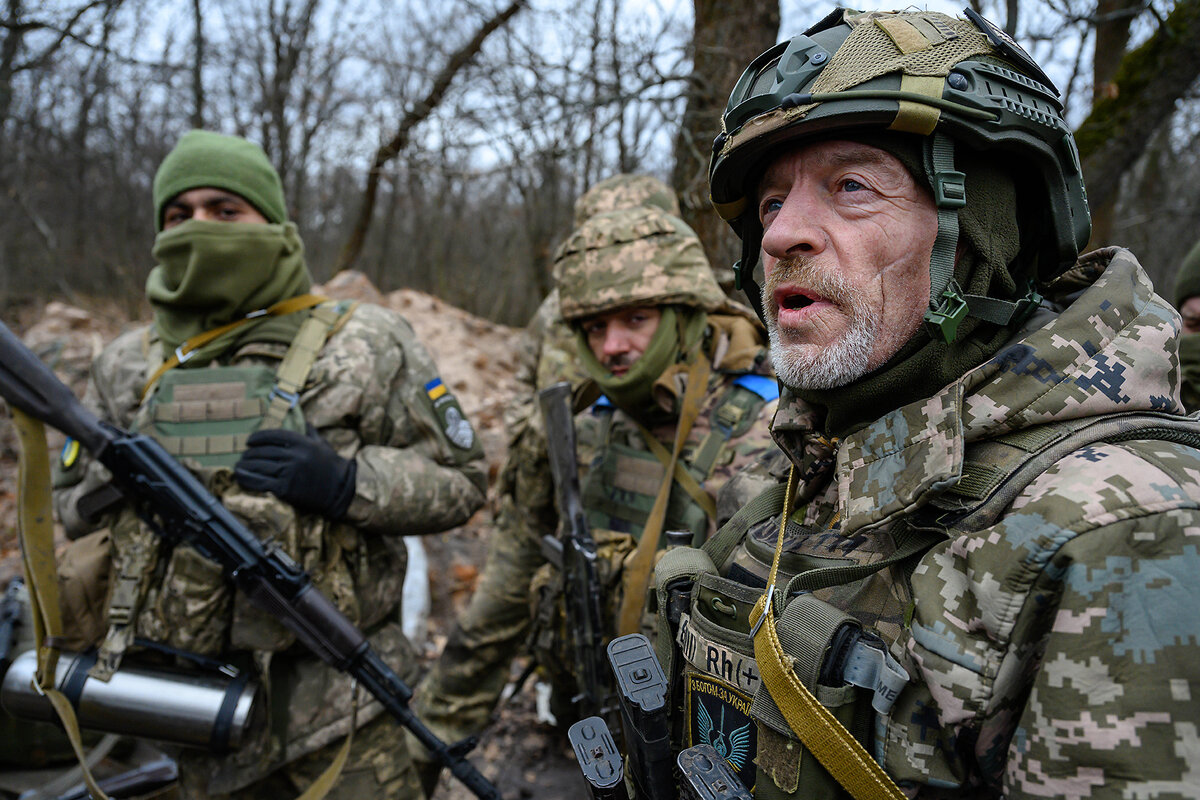Facing relentless Russia, Ukraine confronts shortages of men and morale
Loading...
| Hryshyne, Ukraine
It is an emotional moment for Nataliia Bilanska amid the constant crashes of encroaching artillery.
With advancing Russian forces bringing the southeast Ukraine war front to her town, the pensioner gives herself up to her inevitable evacuation.
Sobbing quietly, she locks her blue-painted front door, double-checks the handle, and then steps back and moves her hands in the shape of a cross, to bless her immaculate home, just west of the key transport hub of Pokrovsk.
Why We Wrote This
A story focused onAs the Russia-Ukraine war grinds toward its third anniversary, morale among Ukrainian troops and civilians is low amid shortages of military support from American and European allies.
“It will only be for two or three weeks,” she says, elevating an unlikely hope over the grim reality in this remote industrial region.
Russia’s monthslong steady advance has done more than force Ms. Bilanska’s evacuation. It has also contributed to the low morale that is afflicting civilians and military personnel the length of the front, as the war triggered by Russia’s invasion grinds toward its third anniversary.
The Russian assault on Pokrovsk, a ghost town that has been under threat for a year, is clearly visible from a rise above Hryshyne. Multiple columns of smoke can be seen rising into the sky as Russian troops subject the town to a pincer movement.
“I don’t know what to tell you,” says Ivan Subotin, a firefighter and volunteer who created the rescue outfit Search Donbas, as he evacuates Ms. Bilanska. He surveys the smoke on the horizon, twitches at the sound of yet another outgoing artillery shell fired nearby, and says he – along with legions of Ukrainians – had hoped the Russians would have been stopped long before this point.
Instead, he now fears his own home will soon “not exist anymore,” as it sits in the line of fire on the other side of Pokrovsk, to the east.
Not enough soldiers
Ukraine is digging deep defenses here west of Pokrovsk. But it is grappling with manpower and firepower shortages all along the 600-mile front. These are exacerbated by delayed and sometimes uncertain military support from American and European allies. It’s an issue that many analysts say will worsen dramatically for Ukraine if the Trump administration reduces or ends the flow of weapons. President Donald Trump indicated Monday that he might be prepared to maintain U.S. military aid to Ukraine in return for rare earths, essential to high-tech electronics.
Ukraine is struggling to mobilize the troops its army needs, and is sometimes using the troops it has inefficiently. Soldiers here say that specialized personnel are being posted to the trenches to serve as gun-toting infantry soldiers. A recent move to send aircraft maintenance crews to bolster infantry units, for example, instead of keeping military aircraft in the air, caused such a public outcry that the decision was reversed.
Russia has taken advantage of Ukraine’s shortfalls recently, to capture towns further south such as Kurakhove and Vuhledar, creating a springboard for a determined move on Pokrovsk, as it seeks to capture all of the eastern Donetsk region.
Russia has saturated this portion of the front line with drones, artillery barrages, and perhaps most importantly – and successfully – an apparently endless supply of Russian soldiers deployed in human wave offensives that both sides call “meat assaults,” due to high casualties.
Recent videos circulating online depict Russian soldiers executing captured Ukrainians at point-blank range, or mocking the bodies of Ukrainian soldiers. The United Nations’ Human Rights Monitoring Mission in Ukraine expressed “alarm” Monday at a “sharp rise” in executions of captured Ukrainian soldiers – a war crime – tabulating at least 79 killings since August.
The impact of Russian gains is keenly felt on a muddy training ground north of Pokrovsk, where the 59th Separate Mechanized Brigade puts newly mobilized infantry recruits through their paces with a compressed schedule that will lead directly to front-line positions.
“We see the difference [in Russian fighting] from three months ago. They have a shortage of vehicles – we see it – but they have more men,” says a combat medic named Volodymyr, who goes by the call sign American because he lived in the United States for eight years. (Under Ukraine’s military rules, soldiers should be identified only by their first names or call signs.)
“If we have a position with three men, and Russians are on that position with 50 men, no matter how good our three men [are], they can’t stop 50 men,” he says.
Russian allies including North Korea “work 24/7” to produce all the hardware that Russia needs, says Volodymyr, “while our allies are more talking than doing.”
In the wrong place?
There is also a broader problem of inexperience, evident on this training ground, where some newly inducted men at the firing range appear to be handling a rifle for the first time, their faces clouded with foreboding.
“The majority of people who come to our brigade are not ready, mentally or physically, ... but we have what we have,” says Volodymyr, noting that the average age of recruits is over 40. The brigade was formed in 2014, and has many combat veterans, but he estimates that today 70% of the unit’s total strength are new recruits.
“You cannot be a fighting veteran for three years – it is impossible. You get injured one time, a second time, a third time, and the fourth time you can be dead,” says Volodymyr, whose own injured back means he teaches, but does not now fight. “If the government needs me on the front line, I am not going to say no, because I understand the situation.”
That situation has been aggravated, these Ukrainian soldiers say, by policy decisions to mobilize and equip new brigades rather than replenishing experienced units.
New brigades have the equipment. “But a lot of time they don’t know how to use it. They don’t have combat experience, so ... they lose a lot of gear on the front line; they lose a lot of men on the front line,” says Volodymyr.
“It’s the biggest problem. Like [in] our brigade,” he adds. “We know how to fight, but are short of vehicles, of ammunition. But we are still here.” Made aware of the issues, President Volodymyr Zelenskyy last month ordered a halt to the creation of new brigades, and for resources to be sent to experienced and combat-ready brigades.
Among the soldiers is a cluster of combat veterans, many trained in allied countries, who voice concern about the misapplication of their battlefield expertise.
“I would say the level of our motivation is dropping because of the way the high command treats high-specialty people,” says an older soldier, Sihitas, who goes by the call sign Kaunas, which means “Lithuanian.”
He points to a sniper beside him, Vasyl, who trained in New Zealand, Britain, and Latvia. “But still he was transferred to the infantry,” says Sihitas. Indeed, 10 minutes later Vasyl receives an order to deploy urgently to an infantry post, and hugs his surprised comrades goodbye.
Sihitas points to another soldier, a specialist in electronic warfare trained in Germany. “And still he was transferred to the infantry,” he says.
Likewise, Sihitas himself used to be armed with an American Mk-19 grenade launcher. “I am very good at that job. But what can I do with this Kalashnikov [rifle]?” he asks.
“We just really want to do what we were taught to do, and what we’re good at,” he says. “We want to fight this war, but we want to be as effective as we can be.”
Oleksandr Naselenko supported reporting for this story.










